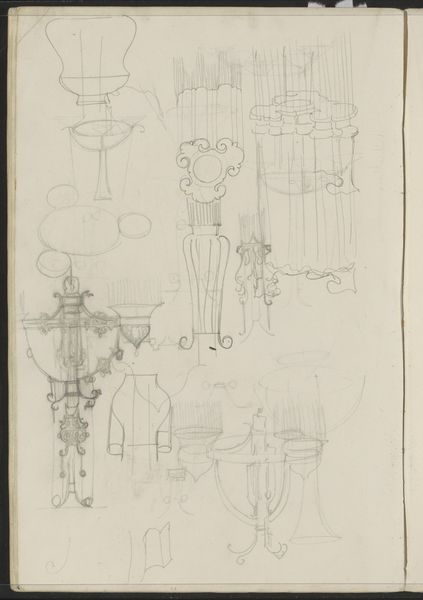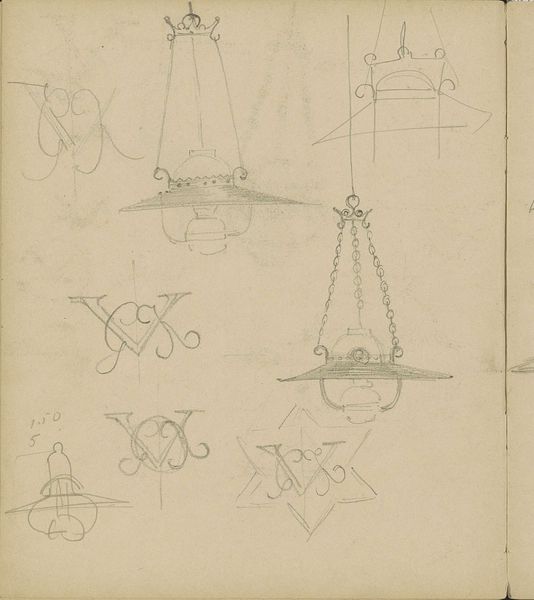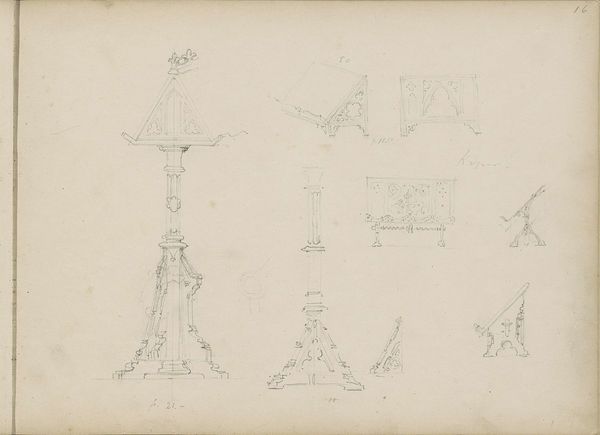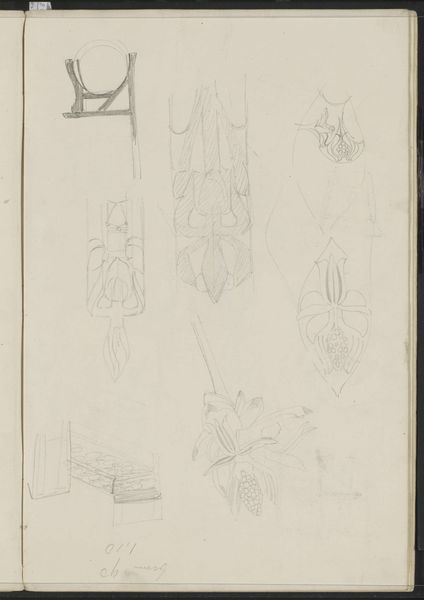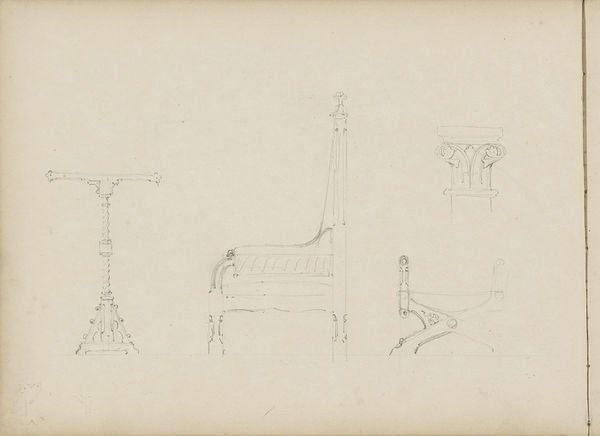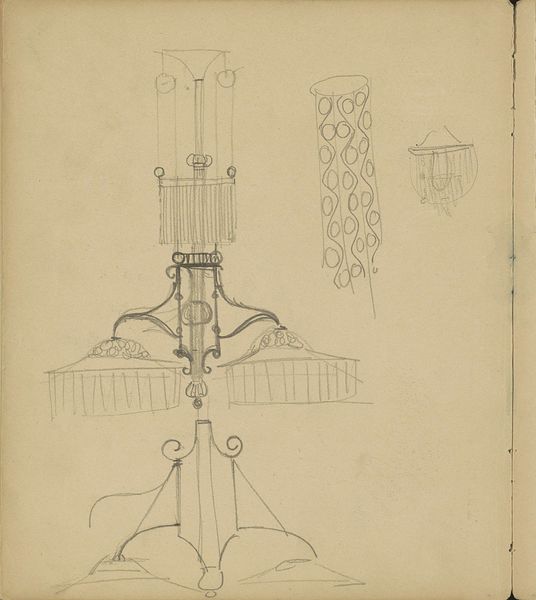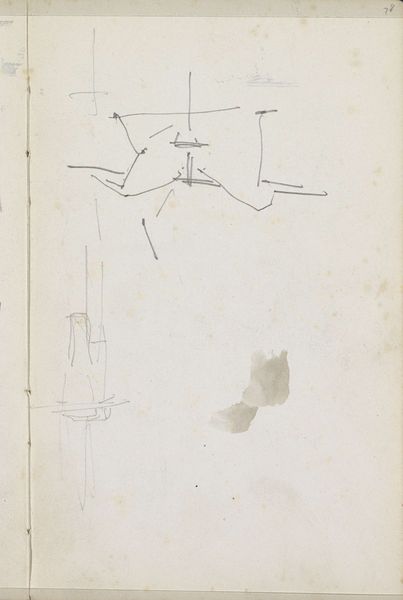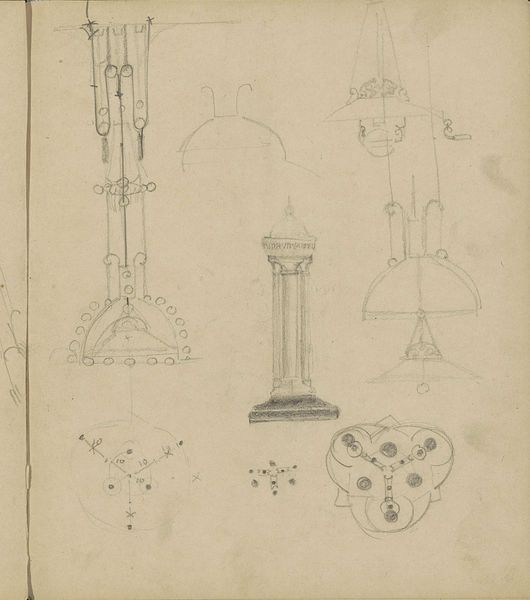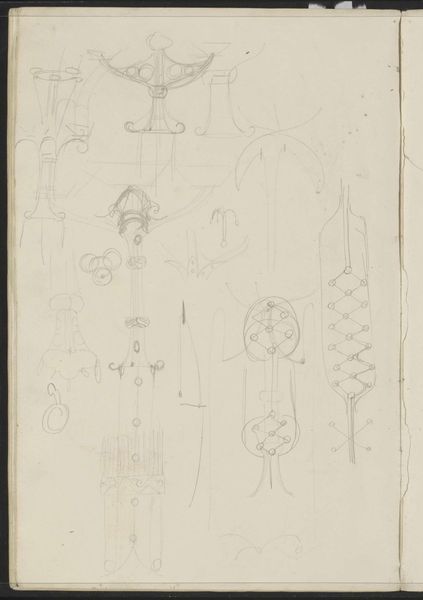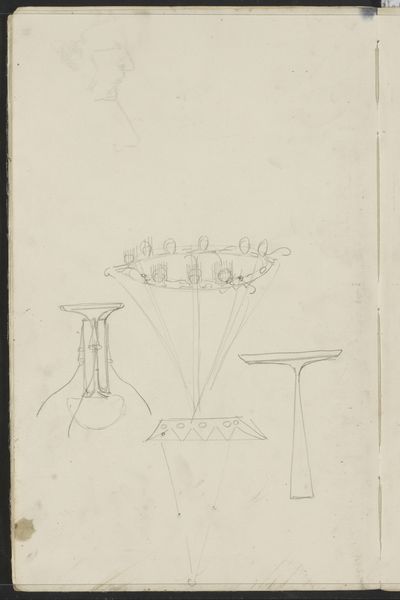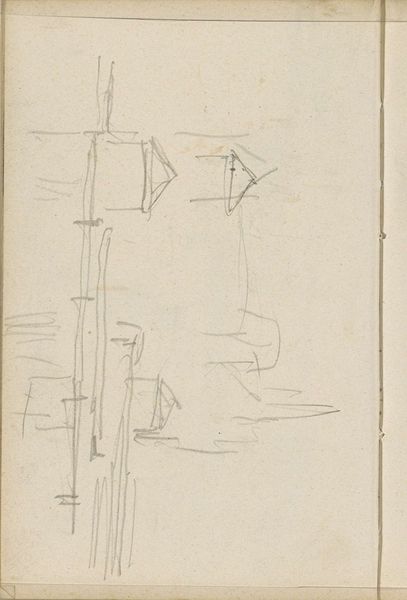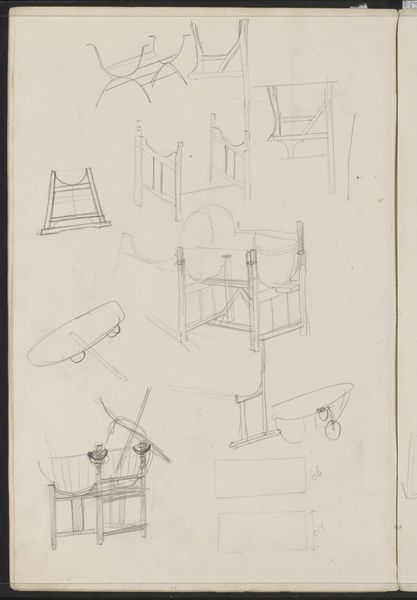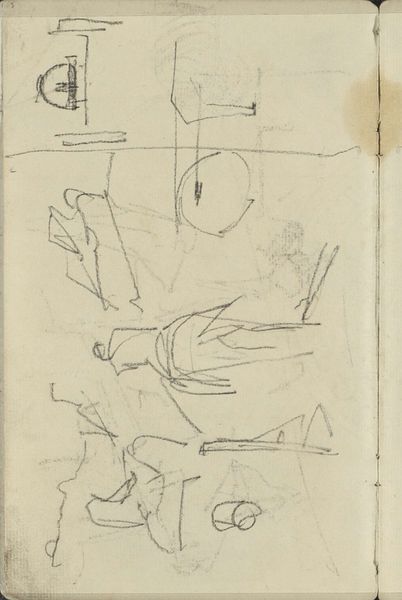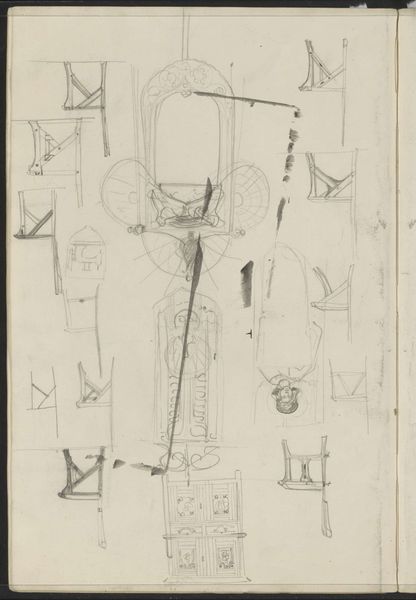
drawing, paper, pencil
#
drawing
#
quirky sketch
#
arts-&-crafts-movement
#
paper
#
personal sketchbook
#
idea generation sketch
#
sketchwork
#
ink drawing experimentation
#
pen-ink sketch
#
pencil
#
sketchbook drawing
#
storyboard and sketchbook work
#
sketchbook art
#
initial sketch
Copyright: Rijks Museum: Open Domain
Curator: Welcome. Here in the Rijksmuseum, we have a page from the sketchbook of Carel Adolph Lion Cachet, "Ontwerpen voor hanglampen," dating from around 1903-1904. These are his designs for hanging lamps. Editor: Immediately, I’m struck by the tentative lines. It feels intimate, like we're peering into the artist’s mind as he works through an idea. There’s a real vulnerability here, a peek behind the curtain of a finished product. Curator: Absolutely. Cachet was a key figure in the Dutch Arts and Crafts movement. He sought to integrate art into everyday life, elevating functional objects to the level of fine art. This sheet reveals the experimentation that underpinned that philosophy. Editor: You see that influence in the ornamentation, even in these early sketches. It's trying to reimagine utility as beautiful and evocative. How does this relate to the larger social context of the era? Curator: The Arts and Crafts movement was, in many ways, a reaction against industrialization and mass production. Cachet and his peers aimed to restore a sense of craftsmanship and artistry to a world that was increasingly dominated by machines. There’s a social critique embedded within this pursuit of beauty. Editor: These sketches provide us with valuable information that shows this social critique. You can see an argument for individuality through art in how intricate the sketchworks are. The symmetry present is fascinating too, implying a kind of balance of beauty with precision, wouldn't you agree? Curator: I would. Moreover, it seems that Cachet aimed at making these objects accessible and that design for the home would positively impact society as a whole, and maybe his designs brought some light into people’s homes, metaphorically as well. Editor: It's that intimate relationship between object and user. I also can't help but imagine who used these sketches later on; how the final forms made people feel, the kinds of experiences people might have with Cachet's light, a powerful design to inspire reflection. It definitely illuminates the Arts and Crafts ideals. Curator: Indeed. It shows that sketchbooks reveal not only artistic techniques but also the underlying aspirations and societal influences shaping the artistic process, creating a rich discourse. Editor: It shows how art history, in practice, must look critically to bring forward conversations and engage communities in broader narratives about the intersectional values represented here: identity, historical implications and aesthetic expression.
Comments
No comments
Be the first to comment and join the conversation on the ultimate creative platform.
